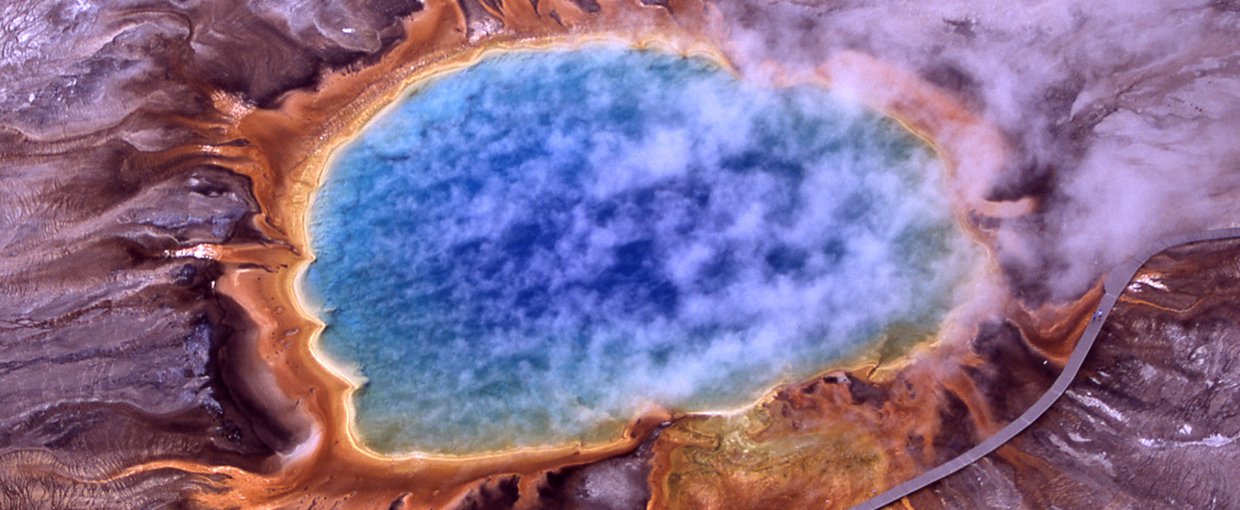
Jan. 6, 2020
Research Highlight
Insight into Archaea-Virus Interactions
A recent study examines surface interactions during infection of an archaea by a virus.

Grand Prismatic Spring in Yellowstone National Park supports extremophiles. Studying these organisms can provide insight into the mechanisms that life as we know it might use survive on worlds where conditions are relatively harsh compared to the Earth.Image credit: Jim Peaco/National Park Service.
A recent study supported in part by the NASA Astrobiology Program provides new insight into the molecular interactions of viruses and microbial populations. Astrobiologists have identified a number of viruses that infect thermoacidophilic microorganisms, but the surface actions involved in viral infection are not well known. Understanding these interactions is important in determining the susceptibility and dynamics of these extremophile populations to viruses. Researchers studied the viral resistance in populations of the archaea, Sulfolobus islandicus. This microorganism is found in hot spring environments that are low in diversity, and where viruses act as the predominant predators that drive evolution. The team was able to characterize molecular interactions involved in the initiation of infection, providing a better understanding of virus-host interactions in archaea.
The study, “Surface resistance to SSVs and SIRVs in pilin deletions of Sulfolobus islandicus,” was published in the journal Molecular Microbiology. The work was supported by NASA Astrobiology through the Exobiology Program. This newly-revealed science is also a critical part of NASA’s work to understand the Universe, advance human exploration, and inspire the next generation. As NASA’s Artemis program moves forward with human exploration of the Moon, the search for life on other worlds remains a top priority for the agency.